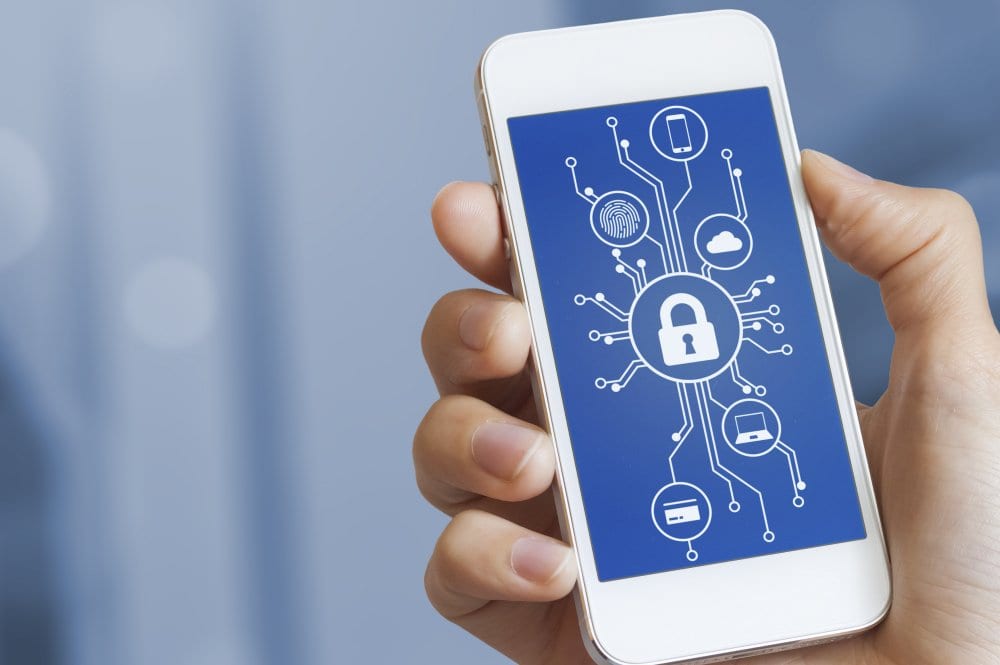Smartphones are an essential part of doing business today. Whether in the office, traveling or in the middle of a meeting, constant reachability allows executives to remain in touch with employees and clients at all times. While this can be seen as a benefit, it also comes with the risk of malware adoption.
This year, 67 percent of CISOs expect to experience a cyber attack or data breach. Experts name the growth of the Internet of Things (IoT) as the biggest factor in these breaches, followed closely by the usage of mobile devices and cloud services. Thankfully, the latter two often come with best-in-class security. And with increasing pressure to lock down mobile devices, technology leaders are viewing mobile device security as a necessity.
Still, breaches can be an issue. Here are a six ways to protect your company’s smartphones:
#1: Adopt a cloud-based service. Small businesses often lack the resources necessary to recruit and pay top security professionals. Fortunately, third-party cloud providers offer services to companies across the globe, giving them the financial bandwidth necessary to hire the best of the best. By trusting a cloud-based application like Nextiva’s VoIP app, businesses can access the best-in-class security without paying a six-figure salary to a security administrator. Third-party cloud provides provide business owners peace of mind as they connect mobile devices to networks.
#2: Provide comprehensive user training. The most important protection you can deploy to fight any security breach happens at the employee level. Require complex passwords and train employees on best practices, including keeping passwords in a safe place, using two-factor authentication when possible, and regularly changing passwords. Instruct your IT team to alert you (or a security administrator) if they see behavior that could jeopardize the integrity of your network.
#3: Invest in virus protection software. Look into extending desktop and laptop malware protection to your mobile devices. Try to limit mobile device purchases to the same operating system to make it easier to invest in one type of software. You may prefer to let employees use their personal smartphones for work, but realize that doing so could put your business at risk because of possible limitations related to employee-purchased devices
#4: Get a mobile VPN. When your employees are away from the office, their mobile devices become vulnerable, especially if they’re connected to public Wi-Fi. A Virtual Private Network (VPN) creates a secure connection between your servers and connected devices, blocking interception by nearby hackers. However, not all VPNs are created equally, so make sure to do a thorough investigation before choosing a provider. For extra security, you can run your own VPN server using software like Check Point Endpoint or Cisco AnyConnect. With a VPN in place, your end users will be able to remotely connect to your network and access files.
#5: Install remote wipe capabilities. Lost or stolen devices put businesses immediately at risk of hacking attacks, and if the device is sold to a third party, you may not have control over its fate. One way to make sure you retain control is to put remote wipe capabilities on every device connected to your network. This allows you to erase and lock everything on a stolen or compromised device so it can’t be used until the wipe is complete.
#6: Secure backup services. Due to the mobile nature of smartphones and tablets, it’s important to be prepared for a complete wipe at any time. If this happens, your end users will undoubtedly have files, emails, and other items on their devices that they want. Make sure you’re investing in cloud backups and making this feature available to your team on company-issued devices. Also, carefully research any third-party cloud software for your devices.
Smartphones are convenient, but they do pose risks. IT teams are smart to fight these risks by proactively deploying security measures.


